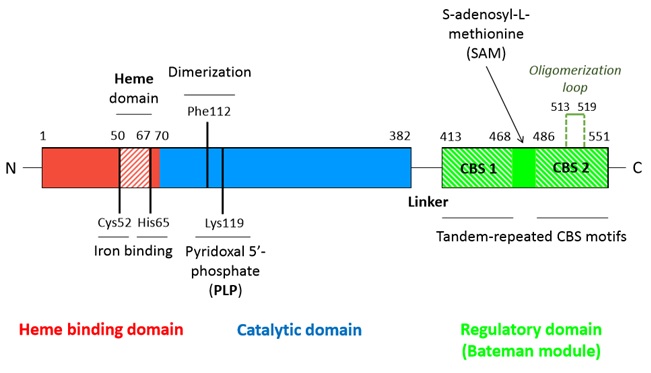Sandbox Reserved 1126
From Proteopedia
(Difference between revisions)
| Line 56: | Line 56: | ||
- hydrophobic interactions between residues I537, L540, A544 of the CBS1 domain of the Bateman module of one monomer with residues I166, V189, V206, L210, I214 of the catalytic core of the other monomer, <br/> | - hydrophobic interactions between residues I537, L540, A544 of the CBS1 domain of the Bateman module of one monomer with residues I166, V189, V206, L210, I214 of the catalytic core of the other monomer, <br/> | ||
- hydrogen bounds between residues T460, N463, S466, Y484 of the CBS2 domain of the Bateman module of one monomer with residues E201, N194, R196, D198 of the loop 191-202 of the catalytic core of the other monomer. <br/><br/> | - hydrogen bounds between residues T460, N463, S466, Y484 of the CBS2 domain of the Bateman module of one monomer with residues E201, N194, R196, D198 of the loop 191-202 of the catalytic core of the other monomer. <br/><br/> | ||
| - | These hydrophobic interactions combined with the hydrogen bounds network anchor the Bateman module of one monomer to the entrance of the catalytic core of the other monomer, thus making it impossible for any substrate to access it. | + | These hydrophobic interactions combined with the hydrogen bounds network anchor the Bateman module of one monomer to the entrance of the catalytic core of the other monomer (close conformation), thus making it impossible for any substrate to access it. |
| Line 64: | Line 64: | ||
S-adenosyl-methionine (SAM) is the allosteric regulator factor of the CBS. Its binding to the Bateman module destabilizes the interactions which sustain the tetramer structure and thus triggers the dissociation of the tetrameric structure into two dimers. | S-adenosyl-methionine (SAM) is the allosteric regulator factor of the CBS. Its binding to the Bateman module destabilizes the interactions which sustain the tetramer structure and thus triggers the dissociation of the tetrameric structure into two dimers. | ||
| - | SAM fixation on the C-terminal regulatory domain entails the small rotation (or at least displacement) of the CBS1 and CBS2 of the Bateman module, thus distabilizing its interactions (hydrophobic interactions and hydrogen bounds) with the catalytic core of the other monomer. As a result, the Bateman module moves away from the catalytic core (this movement is all the more facilitated as the linker region is long enough and made of flexible residues). Loops 145-148, 171-174 and 191-202, previously involved in maintaining the | + | SAM fixation on the C-terminal regulatory domain entails the small rotation (or at least displacement) of the CBS1 and CBS2 of the Bateman module, thus distabilizing its interactions (hydrophobic interactions and hydrogen bounds) with the catalytic core of the other monomer. As a result, the Bateman module moves away from the catalytic core (this movement is all the more facilitated as the linker region is long enough and made of flexible residues). Loops 145-148, 171-174 and 191-202, previously involved in maintaining the close conformation through their interaction with the Bateman module, then relax and allow accessibility to the catalytic site (open conformation). |
Revision as of 21:00, 29 January 2016
| This Sandbox is Reserved from 15/12/2015, through 15/06/2016 for use in the course "Structural Biology" taught by Bruno Kieffer at the University of Strasbourg, ESBS. This reservation includes Sandbox Reserved 1120 through Sandbox Reserved 1159. |
To get started:
More help: Help:Editing |
Human cystathionine β-synthase (hCBS)
| |||||||||||

